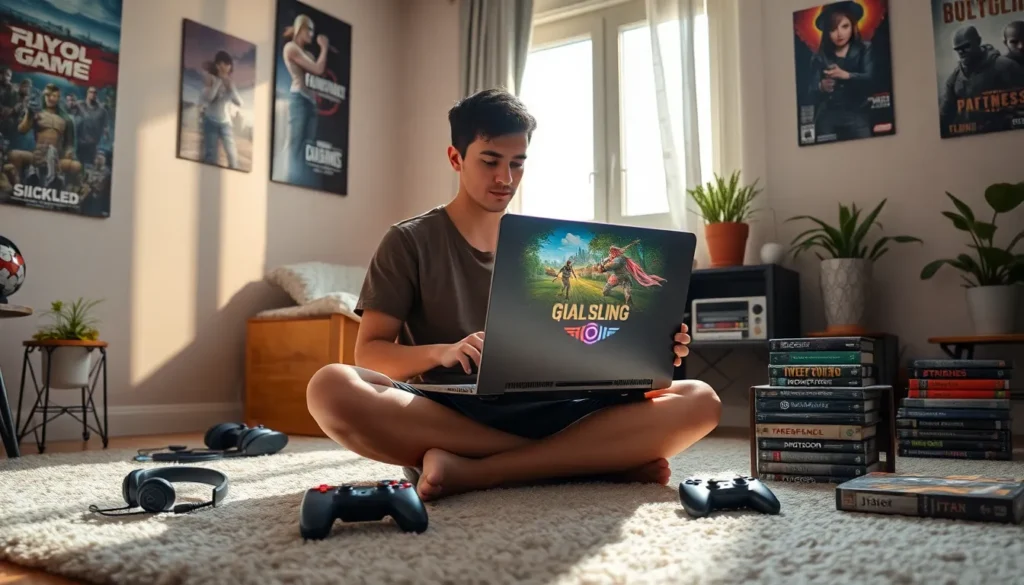Table of Contents
ToggleIn a world where every second counts, capturing the perfect moment can feel like a race against time. Videos might be great for reliving memories, but sometimes all you need is that one stunning frame frozen in time. Why let your iPhone’s camera roll be a cluttered mess of clips when you can transform those moving masterpieces into still images?
Understanding the Need for Images from Videos
Capturing images from videos fulfills multiple needs for various users. Videos often contain dynamic moments that express emotions or events. A single frame can encapsulate the essence of an experience, transforming a fleeting moment into a lasting visual memory. Users treasure these memories, but scrolling through endless video clips can feel overwhelming.
Creating still images allows for easier sharing on social media platforms. Images tend to engage audiences more effectively than videos, increasing interaction rates. Moreover, aesthetic presentations benefit from high-quality visuals derived from videos. Still images allow users to highlight specific moments in an elegant way.
Furthermore, professional content creators and marketers often use images to enhance their visual storytelling. They achieve consistency in their branding by integrating stills that resonate with their audience. In portfolio presentations, single images derived from video content can showcase skills and creativity more powerfully.
Using still images also streamlines workflows, especially in situations where specific moments are needed quickly. It reduces the time spent finding memorable clips within lengthy videos. Efficient processes are critical in today’s fast-paced environments.
Lastly, it simplifies organization on devices. Instead of a cluttered camera roll filled with videos, users can maintain a cleaner space with targeted images. This focus on essential visuals assures an effective and organized digital presence.
Methods to Turn a Video into a Picture on iPhone
Users can easily convert videos into still images on their iPhones using various methods. Two popular options include using built-in features and third-party apps.
Using Built-in Features
The iPhone’s built-in features allow users to extract images directly from videos. Navigate to the video in the Photos app, then play the video. Pausing on the desired frame captures a moment, and tapping the share icon presents the option to save that frame as a photo. This method offers convenience and speed, with no need for additional applications.
Utilizing Third-party Apps
Third-party applications provide additional functionality for extracting pictures from videos. Applications like Frame Grabber and Video to Photo are popular choices. Users can download these apps from the App Store and follow simple on-screen instructions to capture high-quality stills. Many of these apps allow for fine-tuning, such as selecting specific timecodes and enhancing image quality, offering more control over the final output.
Step-by-Step Guide for Each Method
This section outlines the steps for converting videos into images on an iPhone. Follow the provided methods for a seamless experience.
Built-in Features Process
Pause the video on the desired frame in the Photos app. Tap the screen to bring up controls. Take a screenshot by pressing the Side button and the Volume Up button simultaneously. Locate the screenshot in the Photos album. Crop the image if needed for better framing. This method requires no additional apps and captures moments quickly.
Third-party Apps Process
Download a suitable app like Frame Grabber or Video to Photo from the App Store. Open the app and import the video from the library. Select the frame by scrubbing through the video timeline. Most apps enable zooming to ensure precision. Save the selected frame as an image in your photo library. Additional features, such as quality enhancements and adjustments, may be available depending on the app chosen.
Tips for Enhancing Your Images
Improving images extracted from videos can elevate their quality significantly. Use built-in editing tools in the Photos app for basic adjustments. Crop the image to remove unwanted areas for a tighter composition. Adjust brightness and contrast to ensure the picture looks vibrant and clear.
Leverage color filters to add mood or tone to the image, making it stand out. Consider using third-party apps for advanced enhancements. These applications offer features such as sharpening, noise reduction, and detailed adjustments to saturation and hue.
Experiment with different formats for output. JPEG is common for sharing online, while PNG is useful for preserving quality in graphics. Each choice might affect how the image appears on various platforms.
Select the right resolution for the intended use. High-resolution images work well for prints or detailed views, while lower resolutions suffice for quick social media posts. Always keep a backup of original images to allow for re-edits later.
Utilizing these techniques not only enhances the aesthetic quality of images but also achieves better engagement on social media. Applying these tips guarantees a collection of striking stills that resonate with viewers. Capture and share moments that truly reflect the essence of the original video, ensuring memorable visual storytelling.
Transforming videos into pictures on an iPhone opens up a world of creative possibilities. By capturing those fleeting moments as still images, users can enhance their digital storytelling and create lasting memories. Whether opting for built-in features or third-party apps, the process is straightforward and efficient.
With the ability to edit and optimize these images, users can ensure their visuals stand out on social media and beyond. Embracing this technique not only helps declutter camera rolls but also elevates the overall aesthetic appeal of their digital presence. Adopting these methods empowers anyone to turn dynamic moments into striking visuals that resonate with audiences.







